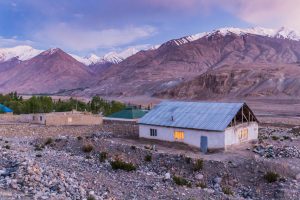Every fall, Muhibahon, a 30-year-old master’s student who lives in Hisor, a small town 30 minutes outside of Tajikistan’s capital, Dushanbe, is forced to drastically change her daily routine. As October sets in, she wakes up at 6 a.m. every day to iron clothes for all five members of her family, make everyone breakfast, prepare some food for dinner, and charge everyone’s phones before local authorities cut off the electricity in her town at 8 a.m.
“Sometimes during the day, I simply don’t have enough battery charge to make a quick call,” Muhibahon told The Diplomat over the messaging app Telegram. (Like everyone else interviewed for this piece, Muhibahon asked to keep her last name out of print fearing retaliation from the government). Her responses in the chat come strictly between 5 p.m. and 11 p.m. local time, when the electricity is turned back on in Hisor. It’s a narrow window of time in which she must do household chores, complete her school assignments, and cook for the family on a smelly wood stove because electricity is too unreliable and gas is too expensive.
Despite this, Muhibahon, who has lived in Hisor for the past six years and is planning to move to Russia, says things used to be much worse. “I used to live in Isfara before moving to Hisor. Back in 2007-08, we didn’t have electricity there for months on end.”
“Back in [the] early and mid-2000s, we had electricity maybe only once a week,” Fotima, a 57-year-old psychologist from Isfara, confirmed to The Diplomat.
Isfara is a town an hour east of Khujand, Tajikistan’s second-largest city. The schedule of electricity access in Isfara today is not much different from the one in Hisor – in the fall, electricity is supplied from 5 a.m. to 8 a.m. and from 5 p.m. to 10 p.m.; in the winter, electricity is cut off mostly from 10 p.m. until 6 a.m. “I go to bed early because I need to be under the covers before power is shut off and the house gets too cold,” said Fotima. “This electricity limit is a source of major stress for women who are forced to cook, wash clothes, and clean their homes in those narrow, unpredictable windows during which we have power.”
The residents of Isfara and Hisor are not alone in their struggles with electricity blackouts: Most of Tajikistan outside of its biggest cities, Dushanbe and Khujand, is subject to annual electricity rationing – scheduled but unannounced blackouts that usually last from early October well into winter, colloquially known as the “electricity limit.”































